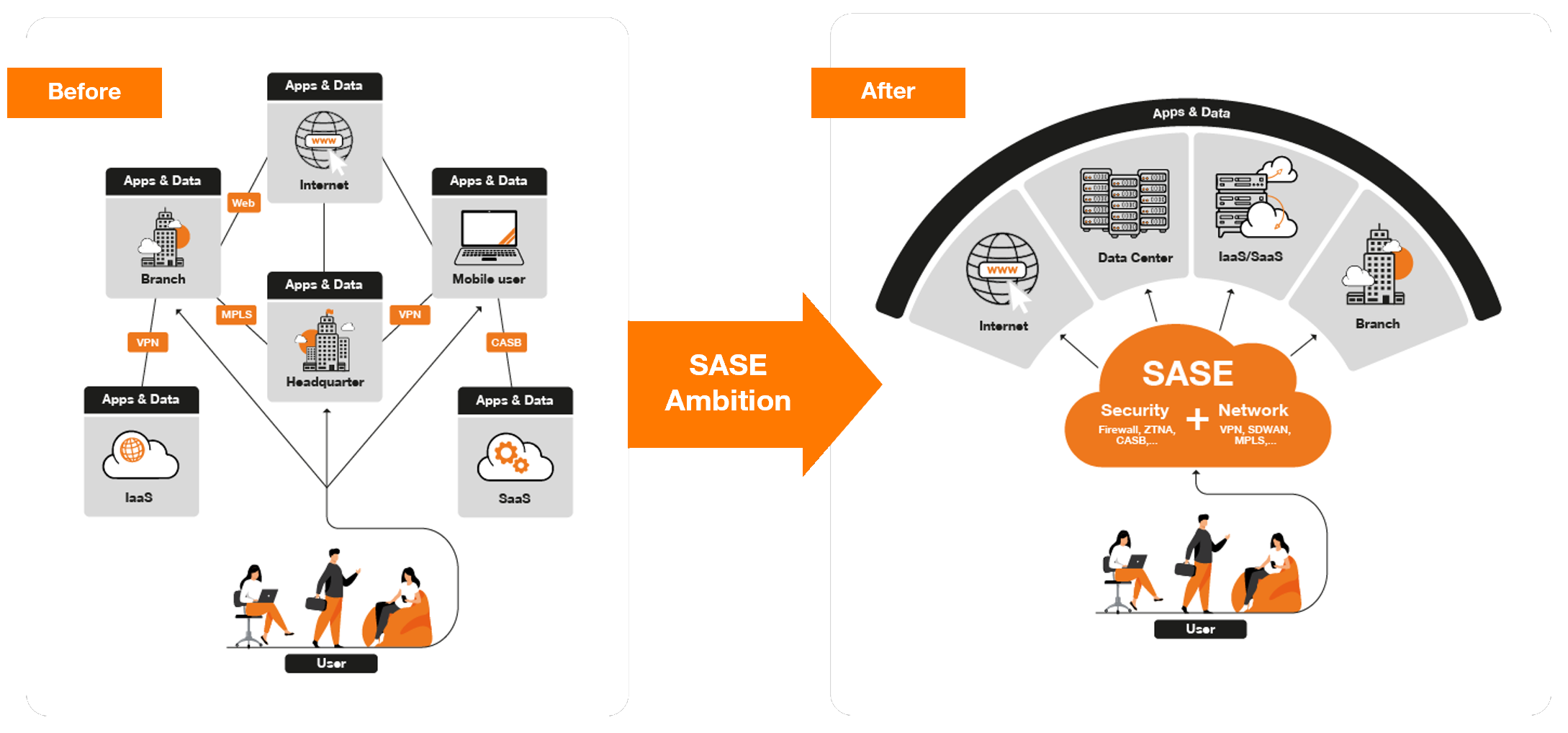Security Service Edge (SSE) - Overview
In a world where remote work and cloud computing have become the norm, the traditional network security model is no longer sufficient to protect organizations from evolving threats. Enter SSE, or Security Service Edge, a transformative concept that redefines network security by integrating it with wide area networking (WAN) capabilities.
Embedded in the Evolution Platform or available independently, SSE integrates the latest network and security innovations, including multi-cloud security and network security, into a comprehensive, systemic security architecture designed to protect distributed enterprises. It includes SD-WAN to provide end-to-end visibility with optimised traffic from the Internet or private networks to your cloud and data center resources.
More than a product, SSE is a model that takes into account the identity, real-time management, specific rules, and risk assessment of the enterprise to determine how the mitigation and response policy should act most effectively. The goal is to enable users to securely and efficiently access their data and applications from anywhere, at any time.
Market needs
The SSE approach is based on a concept created in 2019 by Gartner that defines it as the convergence of markets between network technologies and network security technologies in which functions are distributed in the cloud as much as possible. Secure Access Service Edge refers to a network architecture framework that combines cloud-native security technologies (SWG, CASB, ZTNA, and FWaaS in particular) with wide area network (WAN) capabilities

SSE ambitions.
Benefits of SSE
- End User : Simplicity of use, Enhanced user performance with improved Latency to key corporate applications
- Technical : Safer infrastructure with a coherent approach to Security across network (LAN, WAN and Remote users)
- Business : One stop shop for a consistent approach to entreprise security, derisking the SSE adoption
- Operational : Solution offers reporting end to end on security status of the entreprise infrastructure and clear remedition in place
In summary, SSE represents a holistic approach to network security and connectivity in the digital age. By merging network and security services into a unified, cloud-native platform, SSE offers simplicity, agility, and enhanced protection against emerging threats, making it a critical technology for modern organizations.
Use cases
Secure Internet Access
"Nothing bad gets in, nothing good gets out"
- Protects Internet & SaaS access
- Consistent policy enforcement
- Mobile users protection
- Central management & reporting
- Hybrid solution Integrates cloud & appliances
Secure Cloud Access
"Apply same policies & visibility to cloud"
- Protects access to the cloud
- Consistent policy enforcement
- Centralized visibility & reporting
Secure Private Access
"Control users’ access to internal resources"
- Consistent policy enforcement independent of App location
- Mobile users gets connected to closest datacenter
- Central management & reporting
SSE providers
SSE Lexique
- Cloud-Native Architecture: SSE relies on the cloud as its foundation. It leverages cloud-native services and infrastructure to deliver scalable and flexible solutions.
- Zero Trust Security: SSE adopts a zero-trust security model, meaning trust is never assumed. User identities, device trustworthiness, and contextual factors are continuously verified before granting access to network resources.
- Software-Defined Networking (SDN): SSE employs SDN principles to dynamically route traffic based on application and user needs, optimizing performance and reducing latency.
- Security Services: SSE integrates a range of security services, including secure web gateways (SWG), firewall as a service (FWaaS), and secure access solutions (ZTNA), to provide comprehensive protection against threats.
- Edge Computing: SSE often incorporates edge computing capabilities, allowing for real-time processing and analysis of data at the network edge, enhancing performance for critical applications.


